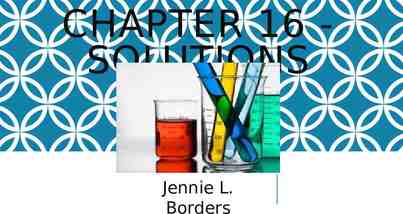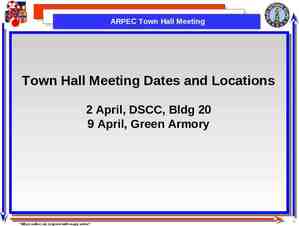Automatic Speech Recognition Slides now available
34 Slides829.50 KB
Automatic Speech Recognition Slides now available at www.informatics.manchester.ac.uk/ harold/LELA300431/
Automatic speech recognition What is the task? What are the main difficulties? How is it approached? How good is it? How much better could it be? 2/34
What is the task? Getting a computer to understand spoken language By “understand” we might mean – React appropriately – Convert the input speech into another medium, e.g. text Several variables impinge on this (see later) 3/34
How do humans do it? Articulation produces sound waves which the ear conveys to the brain for processing 4/34
How might computers do it? Acoustic waveform Acoustic signal Digitization Acoustic analysis of the speech signal Linguistic interpretation Speech recognition 5/34
What’s hard about that? Digitization – Converting analogue signal into digital representation Signal processing – Separating speech from background noise Phonetics – Variability in human speech Phonology – Recognizing individual sound distinctions (similar phonemes) Lexicology and syntax – Disambiguating homophones – Features of continuous speech Syntax and pragmatics – Interpreting prosodic features Pragmatics – Filtering of performance errors (disfluencies) 6/34
Digitization Analogue to digital conversion Sampling and quantizing Use filters to measure energy levels for various points on the frequency spectrum Knowing the relative importance of different frequency bands (for speech) makes this process more efficient E.g. high frequency sounds are less informative, so can be sampled using a broader bandwidth (log scale) 7/34
Separating speech from background noise Noise cancelling microphones – Two mics, one facing speaker, the other facing away – Ambient noise is roughly same for both mics Knowing which bits of the signal relate to speech – Spectrograph analysis 8/34
Variability in individuals’ speech Variation among speakers due to – Vocal range (f0, and pitch range – see later) – Voice quality (growl, whisper, physiological elements such as nasality, adenoidality, etc) – ACCENT !!! (especially vowel systems, but also consonants, allophones, etc.) Variation within speakers due to – Health, emotional state – Ambient conditions Speech style: formal read vs spontaneous 9/34
Speaker-(in)dependent systems Speaker-dependent systems – Require “training” to “teach” the system your individual idiosyncracies The more the merrier, but typically nowadays 5 or 10 minutes is enough User asked to pronounce some key words which allow computer to infer details of the user’s accent and voice Fortunately, languages are generally systematic – More robust – But less convenient – And obviously less portable Speaker-independent systems – Language coverage is reduced to compensate need to be flexible in phoneme identification – Clever compromise is to learn on the fly 10/34
Identifying phonemes Differences between some phonemes are sometimes very small – May be reflected in speech signal (eg vowels have more or less distinctive f1 and f2) – Often show up in coarticulation effects (transition to next sound) e.g. aspiration of voiceless stops in English – Allophonic variation 11/34
Disambiguating homophones Mostly differences are recognised by humans by context and need to make sense It’s hard to wreck a nice beach What dime’s a neck’s drain to stop port? Systems can only recognize words that are in their lexicon, so limiting the lexicon is an obvious ploy Some ASR systems include a grammar which can help disambiguation 12/34
(Dis)continuous speech Discontinuous speech much easier to recognize – Single words tend to be pronounced more clearly Continuous speech involves contextual coarticulation effects – Weak forms – Assimilation – Contractions 13/34
Interpreting prosodic features Pitch, length and loudness are used to indicate “stress” All of these are relative – On a speaker-by-speaker basis – And in relation to context Pitch and length are phonemic in some languages 14/34
Pitch Pitch contour can be extracted from speech signal – But pitch differences are relative – One man’s high is another (wo)man’s low – Pitch range is variable Pitch contributes to intonation – But has other functions in tone languages Intonation can convey meaning 15/34
Length Length is easy to measure but difficult to interpret Again, length is relative It is phonemic in many languages Speech rate is not constant – slows down at the end of a sentence 16/34
Loudness Loudness is easy to measure but difficult to interpret Again, loudness is relative 17/34
Performance errors Performance “errors” include – Non-speech sounds – Hesitations – False starts, repetitions Filtering implies handling at syntactic level or above Some disfluencies are deliberate and have pragmatic effect – this is not something we can handle in the near future 18/34
Approaches to ASR Template matching Knowledge-based (or rule-based) approach Statistical approach: – Noisy channel model machine learning 19/34
Template-based approach Store examples of units (words, phonemes), then find the example that most closely fits the input Extract features from speech signal, then it’s “just” a complex similarity matching problem, using solutions developed for all sorts of applications OK for discrete utterances, and a single user 20/34
Template-based approach Hard to distinguish very similar templates And quickly degrades when input differs from templates Therefore needs techniques to mitigate this degradation: – More subtle matching techniques – Multiple templates which are aggregated Taken together, these suggested 21/34
Rule-based approach Use knowledge of phonetics and linguistics to guide search process Templates are replaced by rules expressing everything (anything) that might help to decode: – Phonetics, phonology, phonotactics – Syntax – Pragmatics 22/34
Rule-based approach Typical approach is based on “blackboard” architecture: – At each decision point, lay out the possibilities – Apply rules to determine which sequences are k permitted i: ʃ s Poor performance due to ʃ h p t iə ɪ – Difficulty to express rules – Difficulty to make rules interact – Difficulty to know how to improve the system tʃ h s 23/34
Identify individual phonemes Identify words Identify sentence structure and/or meaning Interpret prosodic features (pitch, loudness, length) 24/34
Statistics-based approach Can be seen as extension of templatebased approach, using more powerful mathematical and statistical tools Sometimes seen as “anti-linguistic” approach – Fred Jelinek (IBM, 1988): “Every time I fire a linguist my system improves” 25/34
Statistics-based approach Collect a large corpus of transcribed speech recordings Train the computer to learn the correspondences (“machine learning”) At run time, apply statistical processes to search through the space of all possible solutions, and pick the statistically most likely one 26/34
Machine learning Acoustic and Lexical Models – Analyse training data in terms of relevant features – Learn from large amount of data different possibilities different phone sequences for a given word different combinations of elements of the speech signal for a given phone/phoneme – Combine these into a Hidden Markov Model expressing the probabilities 27/34
HMMs for some words 28/34
Language model Models likelihood of word given previous word(s) n-gram models: – Build the model by calculating bigram or trigram probabilities from text training corpus – Smoothing issues 29/34
The Noisy Channel Model Search through space of all possible sentences Pick the one that is most probable given the waveform 30/34
The Noisy Channel Model Use the acoustic model to give a set of likely phone sequences Use the lexical and language models to judge which of these are likely to result in probable word sequences The trick is having sophisticated algorithms to juggle the statistics A bit like the rule-based approach except that it is all learned automatically from data 31/34
Evaluation Funders have been very keen on competitive quantitative evaluation Subjective evaluations are informative, but not cost-effective For transcription tasks, word-error rate is popular (though can be misleading: all words are not equally important) For task-based dialogues, other measures of understanding are needed 32/34
Comparing ASR systems Factors include – – – – – Speaking mode: isolated words vs continuous speech Speaking style: read vs spontaneous “Enrollment”: speaker (in)dependent Vocabulary size (small 20 large 20,000) Equipment: good quality noise-cancelling mic telephone – Size of training set (if appropriate) or rule set – Recognition method 33/34
Remaining problems Robustness – graceful degradation, not catastrophic failure Portability – independence of computing platform Adaptability – to changing conditions (different mic, background noise, new speaker, new task domain, new language even) Language Modelling – is there a role for linguistics in improving the language models? Confidence Measures – better methods to evaluate the absolute correctness of hypotheses. Out-of-Vocabulary (OOV) Words – Systems must have some method of detecting OOV words, and dealing with them in a sensible way. Spontaneous Speech – disfluencies (filled pauses, false starts, hesitations, ungrammatical constructions etc) remain a problem. Prosody –Stress, intonation, and rhythm convey important information for word recognition and the user's intentions (e.g., sarcasm, anger) Accent, dialect and mixed language – non-native speech is a huge problem, especially where code-switching is commonplace 34/34







































